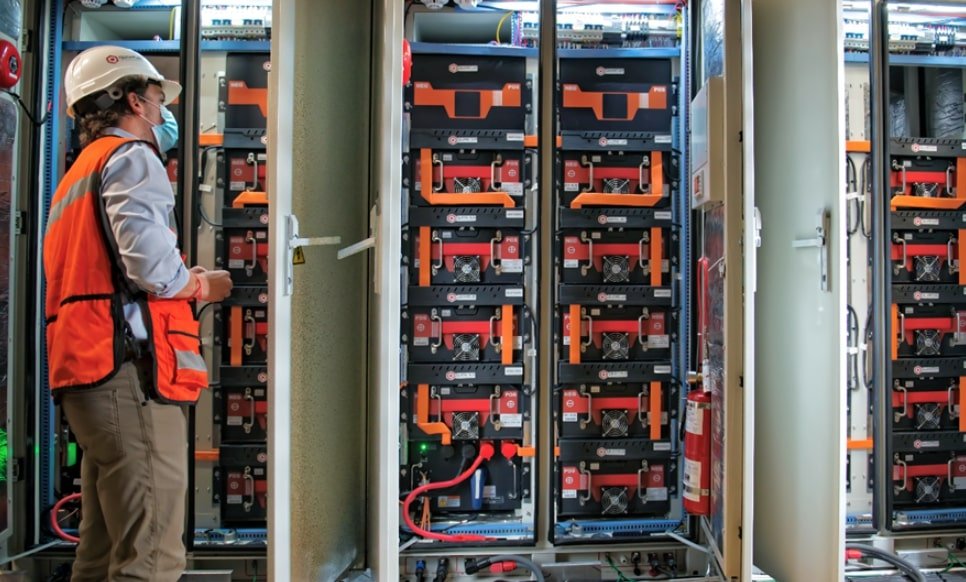An energy storage system deployed by Quartux. Image: Quartux.
System integrator Quartux will soon deploy the largest battery system in the Mexican energy storage market, the company’s co-founder told Energy-Storage.news, discussing opportunities and challenges in the country.
“We’ve grown a lot and are now looking at a pipeline of 300MWh for the next few quarters,” said Alejandro Fajer, managing director of the Mexico City-based firm.
Quartux recently got a 3.2MWh order from Revolve Renewable Power Corp for a battery storage unit at a major hotel chain in Cancun. That will be significantly eclipsed by a 25MWh system Quartux will install at another hotel site, although Fajer isn’t revealing the buyer there.
It will be the largest battery energy storage unit in Mexico and the largest commercial & industrial-located (C&I) system in Latin America, he claimed.
“These are very large resorts that are highly energy intensive with AC etc, and are obviously obliged to consume energy in certain expensive time periods. They are also often not in the best available position in terms of electricity grid around them, so can have bad quality and intermittency that could be solved with the energy storage system,” he said.
The previous largest in Mexico that Energy-Storage.news has been aware of is Wartsila’s 10MW system, co-located with a wind farm and announced in February 2021.
Mexican energy storage market and Quartux’s model
The energy storage market in Mexico is mainly a behind-the-meter (BTM) C&I play after the Andrés Manuel López Obrador (often referred to as AMLO) government made it harder to buy and sell energy on the wholesale markets. This has not killed the front-of-meter grid-scale market, but lessened the opportunity, Fajer said.
The opportunities are therefore in modifying large electricity users’ consumption curves, which can generate 20-40% savings on energy costs by avoiding high peak hour tariffs. Battery units can also help industrial users adhere to new, stricter grid codes which cost 2-10% of a company’s net revenue if not met – an offering Fajer calls ‘energy quality services’.
Quartux buys its battery cells and components from abroad and integrates them into energy storage systems in Mexico. Fajer said the company is active in more than 60% of Mexico’s territories across 10 different industries, hotels being a significant one of them.
“We effectively become energy advisers for the companies we work with by monitoring their consumption curves 24/7. We can tell them if their curve is perfect for adding some solar, and we can then do that solar installation,” he said.
Alejandro Fajer, managing director of the firm. Image: Quartux.
“We work with a variety of business models. We can sell the systems outright and charge an operational fee. For this model, the customer makes a return in 2-5 years. We also provide a leasing model.”
“But the most interesting for me is storage-as-a-service, which we first did in 2017. This is where we put all the upfront investment and share in the savings that are generated.”
That model has also been launched by other players in the Mexican energy storage market, most recently renewable energy company Fotowatio Renewable Ventures (FRV) together with US-based energy analytics and software company Energy Toolbase and local developer Ecopulse.
Alongside Ecopulse, which also says it has deployed in over 60% of Mexico’s states, On Energy Storage is another competitor to Quartux. Energy-Storage.news interviewed its Mexico country manager back in January last year.
Quartux recently received outside investment but the company wouldn’t reveal the identity of the new investors.
Mexico’s domestic energy storage supply chain
As Energy-Storage.news recently reported, Mexico could get Latin America’s first major lithium-ion battery cell gigafactory with the world’s largest battery manufacturer CATL announcing that it was looking at sites in the country.
The government is well aware of the importance of Mexico’s substantial lithium reserves and has made moves to be able to own more of that process and extraction capacity, Fajer said.
But even before that, Mexico is well-positioned to capitalise on the US energy storage markets’ process of nearshoring its supply chain and reducing reliance on China. One of the US’ biggest battery storage system integrators Powin recently moved the assembly of its products to a site in Monterrey, north Mexico.
“Moving more production to Mexico would comply with the US’ desire to reduce the amount of Chinese components. We’re in a great position to be selling those systems, you can save a lot on transportation costs and tariffs. We are talking to players that are looking to produce battery systems in Mexico and helping them navigate how to get there,” Fajer added.
Revolve Renewable Energy Corp recently acquired Centrica Business Systems Mexico from the UK-listed multinational energy firm.
Continue reading










